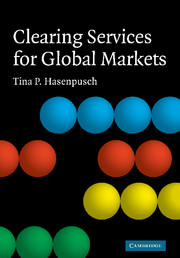Clearing Services for Global Markets
Clearing forms the core part of a smooth and efficiently functioning financial market infrastructure. Traditionally, it has been provided by clearing houses, most of which today act as a 'central counterparty' (CCP) between the two sides of a trade. The rapid growth of cross-border trading has sparked discussion on the most efficient industry structure - particularly in Europe and the US. At the heart of this discussion lies the question of whether the implementation of a single clearing house creates greater benefits than a more competitive but interlinked market structure. This is the starting point for this book, which analyses the efficiency of clearing and clearing industry structure. Along with clear-cut definitions and a concise characterisation and descriptive analysis of the clearing industry, the book determines the efficiency impact of various cross-border integration and harmonisation initiatives between CCPs. This serves to identify the most preferable future structure for the clearing industry.
Product details
September 2009Hardback
9780521518710
570 pages
244 × 170 × 32 mm
1.1kg
Available
Table of Contents
- List of figures
- List of abbreviations
- Acknowledgements
- Foreword
- 1. Introduction
- 2. Setting the stage - definitions and industry setting
- 3. Defining the core issues - efficiency and network strategies
- 4. Collecting empirical insights - introduction to the empirical study
- 5. Analysing costs of derivatives clearing - transaction cost studies
- 6. Exploring theoretical basics - scale effects in clearing
- 7. What theory reveals - framework for efficiency analysis of network strategies
- 8. Checking theory against reality - case studies of network strategies
- 9. Quantifying the efficiency impact - European network strategies
- 10. Introducing the future network economy - development of the clearing industry
- 11. Summary, discussion and recommendations for future research
- Appendices
- Bibliography
- Index.






